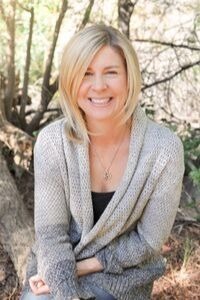This is an excerpt from my conversation with Katie Whalen from the Getting in the Loop podcast. We discuss what circular economy is and how it is different from recycling. Before we get into the interview, let’s define circular economy and recycling.
What is a circular economy?
A circular economy is based on the principles of designing out waste and pollution, keeping products and materials in use, and regenerating natural systems.”
– Ellen MacArthur Foundation
What is recycling
The collection, sorting and processing of disposed materials for use in other manufacturing processes. There are two types of recycling. Mechanical: the process of breaking down collected materials into smaller pieces through shearing or other physical means. Chemical: the process of breaking down collected materials into monomers and other basic chemical elements.
– Circular Economy Practitioner Guide
How is circular economy different from recycling?
Rebecca: How would circular economy be different from other concepts that we already know, like zero waste or recycling?

Katie: A lot of times people say we’re already doing this or this is the same as recycling. That’s what the association initially is. My response is that we look at more concepts than just recycling and zero waste because we’re also looking at repair, remanufacturing and refurbishment.
Circular economy is not just what’s happening at the end of life when no one wants to use this thing anymore. When it can’t be used anymore, then it goes into recycling. But what if companies were able to recapture value from manufacturing a product one time like large machinery? They could, for example, lease this out to a user, repair it, and then lease it out to a different user.
These types of new ideas (or new ways of thinking) where you’re trying to capture monetary value multiple times from one product, for example. That’s where the idea started from, at least in terms of circular economy and how I see it as different than recycling.
Katie: How do you handle the question of how is circular economy different than recycling?

Rebecca: I look at it more from the product perspective. I think about what consumers are thinking about because the blog is really for consumers. I call them conscious consumers. They are people who care about sustainability. I think, How can I continue to buy new T-shirts, and then keep them within a loop?
I think about it more in terms of, I need a new T-shirt. Which brand can I buy it from? Is this a good company that’s actually getting the material from organic cotton or bamboo? What are the biological materials? Where did this come from originally? And then what will I do with it when there’s a stain or hole in it? It’s probably not something that the Salvation Army wants since it has a big hole in it. Where does that go?
Do I give it to H&M where they have their dropbox and that stuff then gets recycled in some way? When I think about circular economy products I think about how consumers will see them.
Katie: I think it’s an interesting point you bring up about making the pre-decision. Like should I bring this to the Salvation Army? In Europe, at least we have these little drop boxes where you can put your textile waste.
I was talking to people who are experts in textiles and circular economy, and they were saying a lot of people only put good quality clothing in those boxes as opposed to underwear or all of their textile waste. But in reality, it could be beneficial to put all your textile waste there because a lot of underwear (at least men’s) is 100% cotton. So that is a perfect kind of material to be recycled. For textiles, it’s much better than just putting it in the trash.
A systems change toward a circular economy
Katie: I got so interested in the idea of circular economy initially because I saw a lot of pressure on the individual. The individual has to act in a certain way to be sustainable, or in an environmentally friendly way.
Whereas in the circular economy it was more about this system change and there was even the question of does the individual even need to know how we’re doing things? Because from a design perspective, it should be really easy for people to make these types of decisions and to just inherently put it in the correct bin.
So for me, the intrigue initially of circular economy thinking that we should just inherently do things in a way that makes sense. And things don’t have to be advertised as better for the environment. It should just be easy to do the right thing.
Rebecca: Absolutely. That’s the thing that’s so exciting about the idea of circular economy because I completely agree. I know that I write about individual action in terms of what we can do in terms of conscious consumption. But it’s a very small niche of people who are willing to put the time and effort into thinking about it. We definitely have the people who are like, yes, I’m going to do this. But it’s still a very small group.
For this to be impactful, it has to be a systemic change. This isn’t just about you as one person. I am guilty of this message of individual change. Yes, it’s a great message, but at the end of the day, the most important thing that we can do is to work to help the system change. It’s always a struggle of how do I communicate that? It has to be a system change, but we individuals can do things to help it along.
Katie: I also struggle with this too. On the podcast, my listeners say what can I do? And then it’s a chicken and egg kind of situation.
From my perspective, if I look out and see so much unused value like in the phone example we were talking about earlier (read Circular economy principles with Katie Whalen.) There is a lot of value in these phones. It makes so much more sense to recycle them properly and be able to get those materials back rather than just have them sit in a landfill.
The current system is not working. There’s a design flaw. So whose responsibility does that come back to you? Because you as one person can only do so much.
Listen to Circular Economy 101 on the EarthyB. Podcast.
Stay in the Loop with Katie Whalen
Katie Whalen is getting her Ph.D. in circular economy at Lund University in Sweden. Stay in the loop about what’s happening in the circular economy with her Getting in the Loop podcast.
This interview was edited for clarity and readability.
